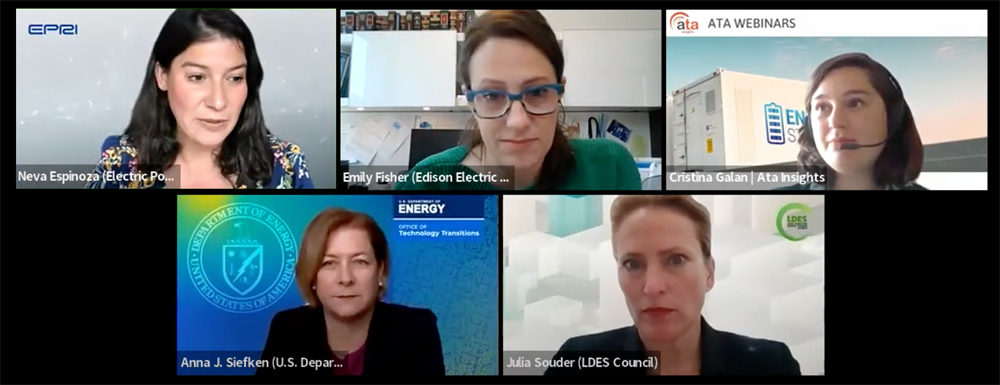PJM is weeks away from the scheduled date for the 2025/26 Base Residual Auction (BRA) without an order from FERC on whether it will be permitted to delay the auction (ER23-1609).
The RTO on April 11 asked FERC for permission to indefinitely postpone the auction, currently scheduled for June 14, to allow it to implement market rule changes now under stakeholder consideration through the Critical Issue Fast Path (CIFP) process. The following three auctions would also be delayed under the proposal, with the schedule returning to its normal three-year advance time frame for the 2029/30 BRA in May 2026.
Under Federal Power Act Section 205, if FERC does not issue an order within 60 days, the filing will go into effect by operation of law. That period ends on June 10, the date on which PJM asked that the changes go into effect. The RTO had said that if the commission does not approve the filing prior to June 10, it will proceed with the auction as scheduled.
PJM had requested expedited consideration with the hope of receiving an order by May 19, which the RTO said would allow it to provide market participants with advanced notice of any delay to the auction and allow them to focus their efforts on the CIFP process.
The filing did not include exact auction dates for the four delayed auctions to give PJM flexibility to incorporate any changes arising from the CIFP process, but it did include an illustrative timeline. Under that timeline, the 2025/26 BRA would be held in June 2024, and the following three auctions would be held every six months after.
Steve Lieberman, American Municipal Power’s vice president of transmission and regulatory affairs, said market participants are having to make decisions about their offers with little clarity about what the future of the auction holds, making it difficult to properly manage where they should focus their time and resources.
“I think we’re all in a tough place here, and it would be good to get some direction one way or another from FERC,” he said. “Nobody in our markets likes uncertainty.”
Comments submitted to the commission on the filing were split, with opponents arguing that a delay would disrupt state procurement auctions and undermine the goal of giving confidence to generation owners about their potential revenues. Opponents also said that the filing was based on speculation that the CIFP process will yield a proposal ultimately accepted by FERC. They argued that the proposal was overly broad by not including the specific dates to which PJM would delay the auctions.
“In theory and practice, it’s clear that shortening the lead time between the auction and the delivery year helps incumbent resources and muddies the market signal needed to incent new generation,” the Organization of PJM States Inc. protested.
Supporters argued that delaying the auction would allow the changes to the capacity market to be implemented with the aim of improving the accuracy of the price sent by the auction.
“While P3 has not traditionally supported delaying important [capacity] auctions, given the need to conduct future capacity market auctions under just and reasonable rules, P3 supports PJM’s filing as an unfortunate necessity,” the PJM Power Providers (P3) Group said in its comments. “The commission’s approval of the PJM filing will allow PJM to address the capacity market concerns and reliability issues in PJM so that auctions for the delivery years 2025/26 and beyond will appropriately send price signals to capacity resources to remain on, retire from or enter the market.”
PJM defended its filing by stating the impact of December 2022’s Winter Storm Elliott and reliability concerns found in its February “Energy Transition in PJM” white paper highlight the need to send price signals that will encourage the generation needed for resource adequacy through 2030.
“While PJM does not take any delay of the capacity auctions lightly, on balance, a limited delay of the upcoming [Reliability Pricing Model] auctions is necessary and appropriate at this time given the region’s recent experience with Winter Storm Elliott and the imminent reliability concerns identified in the Energy Transition ‘4R’ white paper,” PJM said in a May 10 reply comment. “This delay is necessary because sending the correct capacity market price signal is better than continuing to establish inaccurate price signals in an attempt to rush the auction and establish a clearing price for the capacity auction as early as possible.”
The Sierra Club and Citizens Utility Board commented that although they do not have an opinion, they believe the white paper had a flawed outlook on resource adequacy over the coming years. In an affidavit, economist James Wilson argued that it ignored the price signals that future capacity auctions would send as resources retire to construct new generation.
“The [white paper’s] model fails to account for the core feature of the PJM capacity market intended to anticipate and address future potential shortfalls: the capacity market price as determined by PJM’s sloping demand curve,” the comments state.

